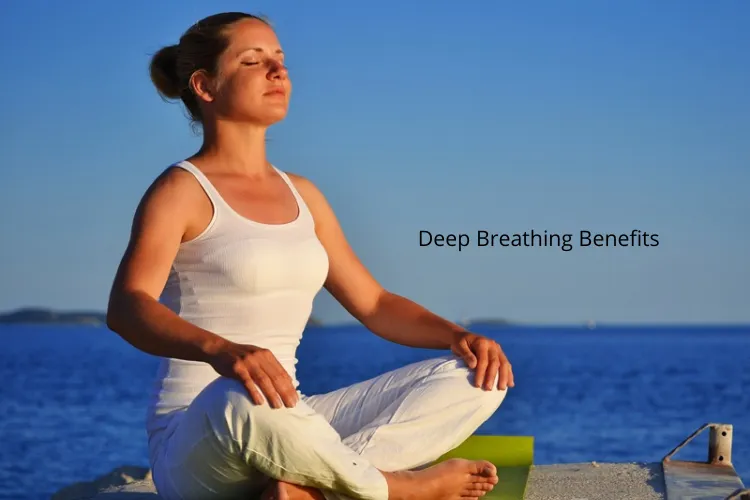The Breathing process is vital for all living beings’ survival. Breathing is basically inhaling air which then is distributed throughout the body. But in this packed life schedule and changes in lifestyle people have forgotten how to breathe properly and now it’s the right time to take the habit of breathing seriously. Have you focused on your breathing? Have you ever made a conscious choice of deep breathing? Do you know the different types of breathing exercises? Have you ever tried any breathing techniques? Do you know how important is deep breathing for your overall physical and mental functioning?
The Right Way of Breathing
We first need to learn the proper way to breathe rather than directly landing on its benefits or different techniques. As breathing is a dependent process that impacts other bodily functioning and also affects them. Hence breathing is like a bridge that connects life to consciousness and unites the body with our thoughts. So, it’s important to pay attention to breathing, for example, sitting in a straight posture will let air enter, circulate, and exhale without restrictions. Exhaling is often overlooked as most people do not completely throw out carbon dioxide from their lungs which has to be changed by expelling all air from the system will result in more efficient lung functioning.
Many people may find deep breathing unnatural. This is due to a combination of circumstances. For starters, in our culture, body image has a negative impact on respiration. Because having a flat stomach is considered beautiful, women (and men) prefer to contract their stomach muscles. This obstructs deep breathing and eventually makes shallow “chest breathing” appear normal, increasing stress and anxiety. Diaphragm movement is limited by shallow breathing. The bottom region of the lungs does not receive enough oxygenated air. This may cause you to feel out of breath and anxious. Deep abdominal breathing allows proper oxygen transport or even the advantageous exchange of incoming oxygen for departing carbon dioxide. It can predictably drop or stabilize blood pressure and pulse rate. This kind of deep breathing is also called “Diaphragmatic Breathing”.
The benefits of Deep Breathing/ Diaphragmatic Breathing are
Breathing Exercises increase the quantity of oxygen in the body while also increasing the discharge of toxins through carbon dioxide. Clean, oxygen-rich blood fights infectious germs and viruses more effectively. Stress, bad eating habits, and shallow exhalation acidify the body; deep breathing eliminates all toxins, changing the body to alkaline and easing strain. Improved breathing will also aid in the body’s absorption of vitamins and minerals. Diaphragmatic breathing helps in relieving any gastrointestinal issues, constipation, indigestion, etc. proper digestion keeps the body energetic, and healthy and helps to balance hormones which results in minimal stress and clear skin.
Psychologists also utilize deep breathing exercises as a long-term therapeutic practice to treat anxiety attacks, insomnia, and other disorders by regulating the hormones that release endorphins in the body, signaling the brain to unwind and calm down. Breathing exercises on a regular basis may help you focus and concentrate. It also improves memory, cognition, and brain functioning. Regular deep breathing lessens the risk of stroke as well. It also stimulates the vagus nerve, which suppresses the fight or flight response. It also enhances lung flexibility and breathing capacity by increasing the volume of air in the lungs and diaphragm.
Types of Breathing Exercises
Breathing exercises are simply to enhance the breathing experience and develop your breathing organs.
• Purse-lip Breathing is a technique used to regulate one’s oxygenation and ventilation. A person must inhale through the nose and exhale via the mouth in a controlled, steady manner.
• In-breath Focus means while you do deep breathing, use a picture in your mind and a word or phrase to help you feel more relaxed.
• In Lion’s Breath, imagine that you’re a lion. Let all of your breath out with a big, open mouth.
• In Diaphragmatic Breathing, you consciously use your diaphragm to take deep breaths. When you breathe normally, you don’t use your lungs to their full capacity.
• Alternate-nostril Breathing doesn’t just belong to yoga, it’s often used in the mindfulness practice of breathing through alternate nostrils, one side at a time.
• Resonance Frequency Breathing is a slow relaxed diaphragmatic breathing at around 3-7 breaths per minute that has a regulating effect on the autonomic nervous system and other key body systems such as the circulatory system.
• Sitali is a breathing technique that cools the body, adds moisture to the system, and soothes a Pitta imbalance. You simply curl the sides of your tongue and breathe in through your mouth.
• Bhramari Pranayama (Humming Bee Breath) it’s a really simple practice that utilizes sound by humming during the exhalation. This sound and exhale emphasis helps to downregulate the nervous system to create calm.
“When the breath is unsteady, all is unsteady; when the breath is still; all is still. Control the breath carefully. Inhalation gives strength and a controlled body; retention gives steadiness of mind and longevity; exhalation purifies body and spirit. ”
– Goraksasathakam
Stress can disrupt your life. Our Wellness Experts at Ganeshaspeaks.com can equip you with the best coping tools.



